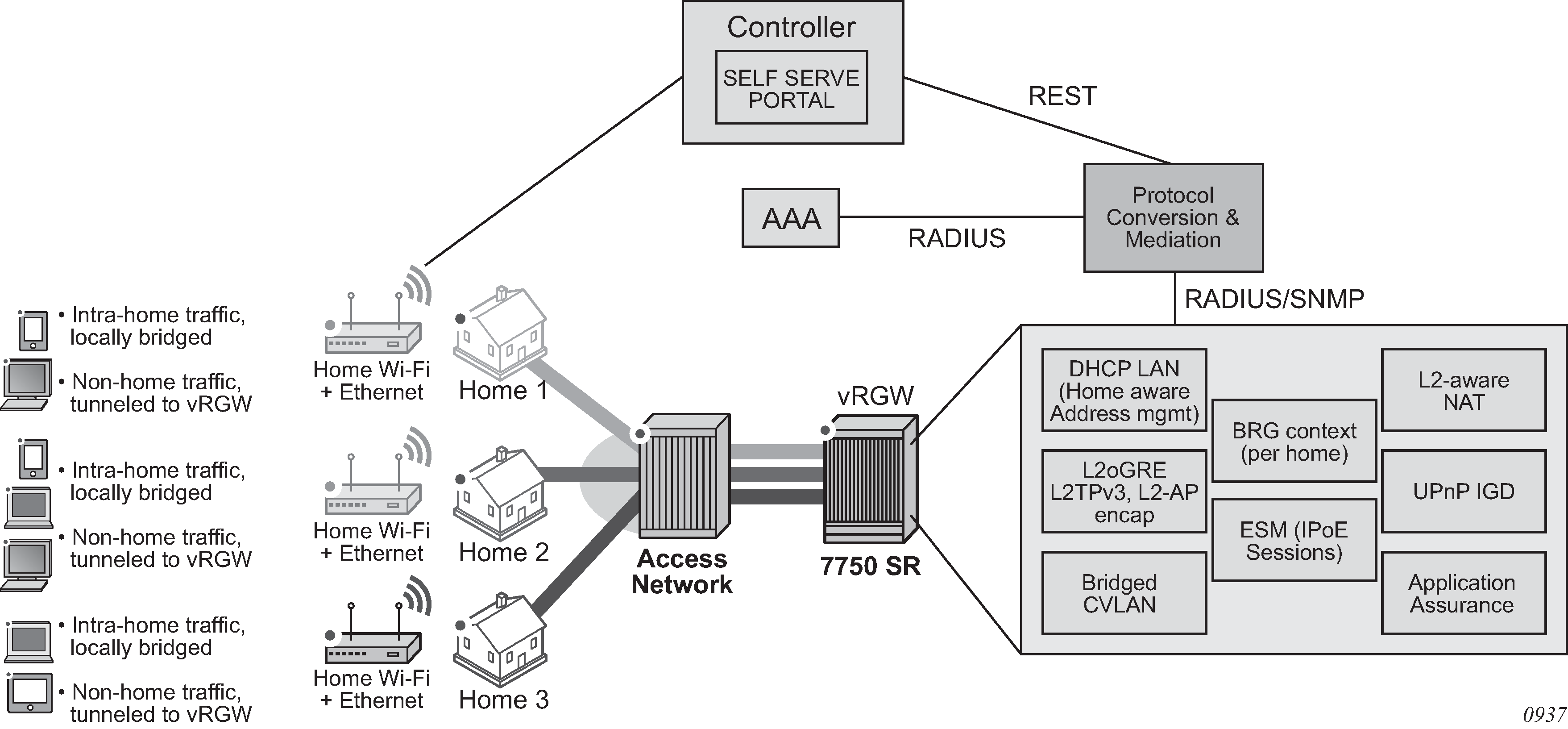A Virtualized Residential Gateway (vRGW) transforms the Layer 3 routed Residential Gateway (RGW) in the home into a Bridged Residential Gateway (BRG), by moving the Layer 3 functions of an RGW into the network resides on a node (vRGW). The Layer 3 functionalities (such as address management, routing, Internet connectivity, NAT, UPnP, firewall, and application awareness) provides functions such as URL filtering and parental control and is moved to the network and resides on the vRGW. The RGW then operates in a bridged mode and performs local switching of intra-home traffic that originates and terminates on devices within the home. Bridged traffic destined for outside the home (such as to the Internet, the provider’s content, or another home) over the WAN toward the vRGW is hereby referred to as a BRG.
This mode of operation allows an operator visibility of the connected devices on the home LAN, instead of just a single IP address per home as is the case for a Layer 3 RGW. This allows operational improvements through per-device control and troubleshooting, and the ability to offer new services faster and on a more granular device specific-basis.
The router, as a dedicated gateway or as a BNG, serves as a vRGW providing Layer 3 termination and ESM functionality for bridged homes, as shown in Figure: Virtualized Residential Gateway (vRGW).
